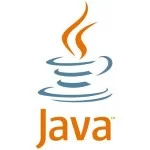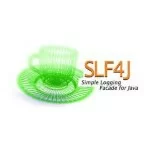Setting basic response http headers for REST resources on a simple Vertx Rest based app
I am new to Vert.x but as a Java developer (die hard) I find it much more enjoyable and promising comparing to NodeJS or whatever – Reactor based frameworks/libraries. So I was going through implementing a very simple Restful API, using Vert.x.
My problem for today is that I wanted to include some certain HttpHeaders in most (all) of my , responses. For example set the Content-type to “application/json”. In the future maybe add some others.
I was kind of wondering around as a Vert.x newbie, then I kind of realized that what is was eventually suggested in this blog post (See the use of BodyHandler) would actually work for me.
So I had my main VertxMain java app where I register my MyWebVerticleApp.
01 02 03 04 05 06 07 08 09 10 11 12 13 14 15 16 17 18 | package com.javapapo.vertxweb;import io.vertx.core.Vertx;import io.vertx.core.VertxOptions;/** * Created by <a href="mailto:javapapo@mac.com">javapapo</a> on 15/11/15. */public class VertxEngineMain { public static void main(String[] args) { VertxOptions opts = new VertxOptions(); Vertx vertx = Vertx.vertx(opts); vertx.deployVerticle(new MyWebVerticleApp()); }} |
Then I have created a small handler, I call it BaseResponseHandler, that eventually adds the HttpHeader in my responses.
01 02 03 04 05 06 07 08 09 10 11 12 13 14 15 16 17 18 19 20 21 22 23 24 | package com.javapapo.vertxweb.handlers;import io.netty.handler.codec.http.HttpResponse;import io.vertx.core.Handler;import io.vertx.core.http.HttpHeaders;import io.vertx.core.http.HttpServerRequest;import io.vertx.core.http.HttpServerResponse;import io.vertx.ext.web.RoutingContext;/** * Created by <a href="mailto:javapapo@mac.com">javapapo</a> on 27/11/15. */public class BaseResponseHandler implements Handler<RoutingContext>{ @Override public void handle(RoutingContext context) { HttpServerResponse response = context.response(); response.putHeader(HttpHeaders.CONTENT_TYPE.toString(), "application/json"); //other stuff! response.setChunked(true); context.next(); }} |
Then in my MyWebVerticle I just register the handler to be invoked all the time, in the router chaining.
01 02 03 04 05 06 07 08 09 10 11 12 13 14 15 16 17 18 19 20 21 22 23 24 25 26 | package com.javapapo.vertxweb;import com.javapapo.vertxweb.handlers.BaseResponseHandler;import com.javapapo.vertxweb.handlers.StatusHandler;import io.vertx.core.AbstractVerticle;import io.vertx.core.Future;import io.vertx.core.http.HttpServer;import io.vertx.core.http.HttpServerResponse;import io.vertx.ext.web.Route;import io.vertx.ext.web.Router;import io.vertx.ext.web.handler.BodyHandler;/** * Created by <a href="mailto:javapapo@mac.com">javapapo</a> on 16/11/15. */public class MyWebVerticleApp extends AbstractVerticle { @Override public void start(Future<Void> fut) { HttpServer server = vertx.createHttpServer(); Router router = Router.router(vertx); //enable the base response handler overall! router.route().handler(new BaseResponseHandler()); router.route("/status/").handler(new StatusHandler()); server.requestHandler(router::accept).listen(8080); }} |
| Reference: | Setting basic response http headers for REST resources on a simple Vertx Rest based app from our JCG partner Paris Apostolopoulos at the Papo’s log blog. |





